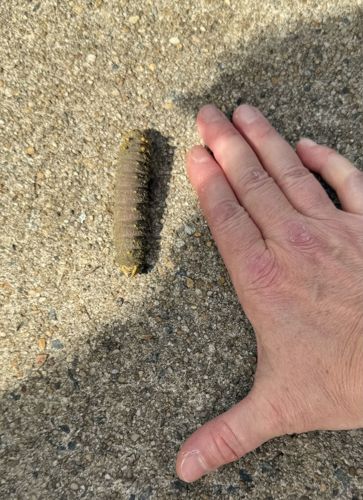Leatherjacket larva (Crane Fly Larva)
Scientific Name: Tipula species (larva)
Order & Family: Diptera (True Flies), Tipulidae (Crane Flies)
Size: 3-5 cm (1.2-2 inches) long

Natural Habitat
Found in soil, turf, lawns, pastures, and some damp areas, feeding on plant roots.
Diet & Feeding
Primarily detritivores, feeding on decaying organic matter in the soil. Some species can be herbivorous, feeding on plant roots, especially grasses and cereals.
Behavior Patterns
Larvae live underground, feeding for several months, often through autumn, winter, and spring. They are most active in moist conditions and can cause significant damage to lawns and crops by feeding on roots. They pupate in the soil and emerge as adult crane flies.
Risks & Benefits
Risks: Can be a significant pest in turf, lawns, sports fields, and agricultural crops, causing root damage that leads to yellowing, thinning patches, and increased susceptibility to disease. Benefits: Decomposers, helping to break down organic matter in the soil. Adult crane flies are generally harmless and do not bite or sting.
Identified on: 9/16/2025